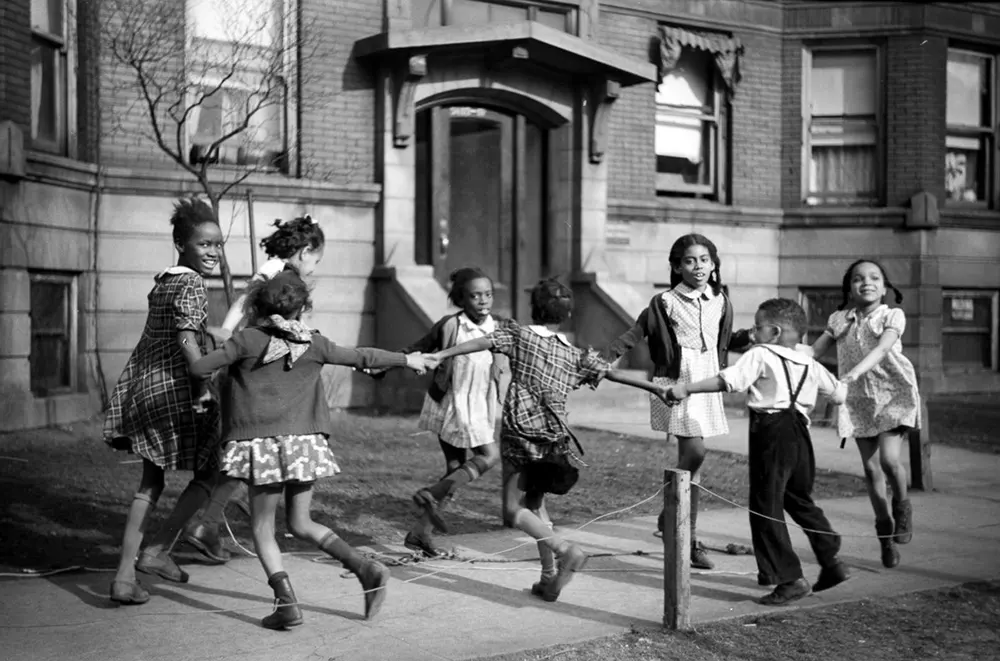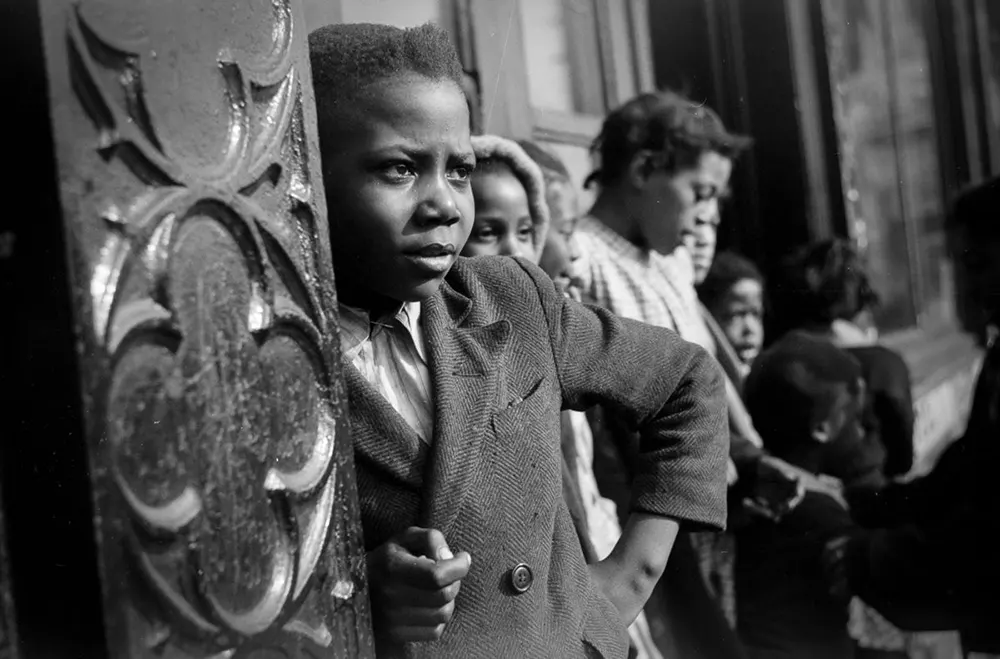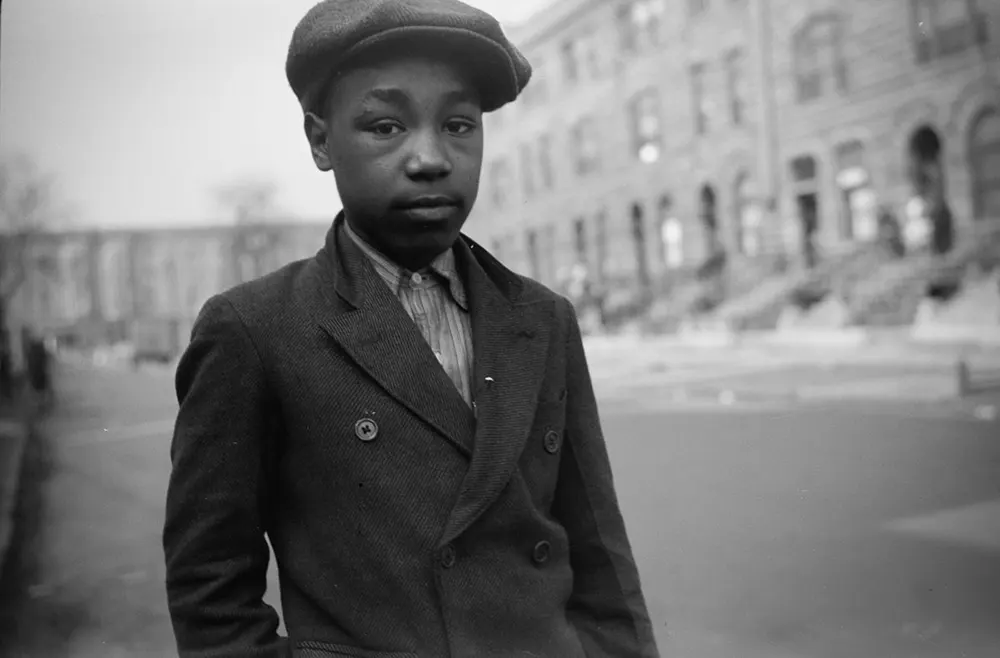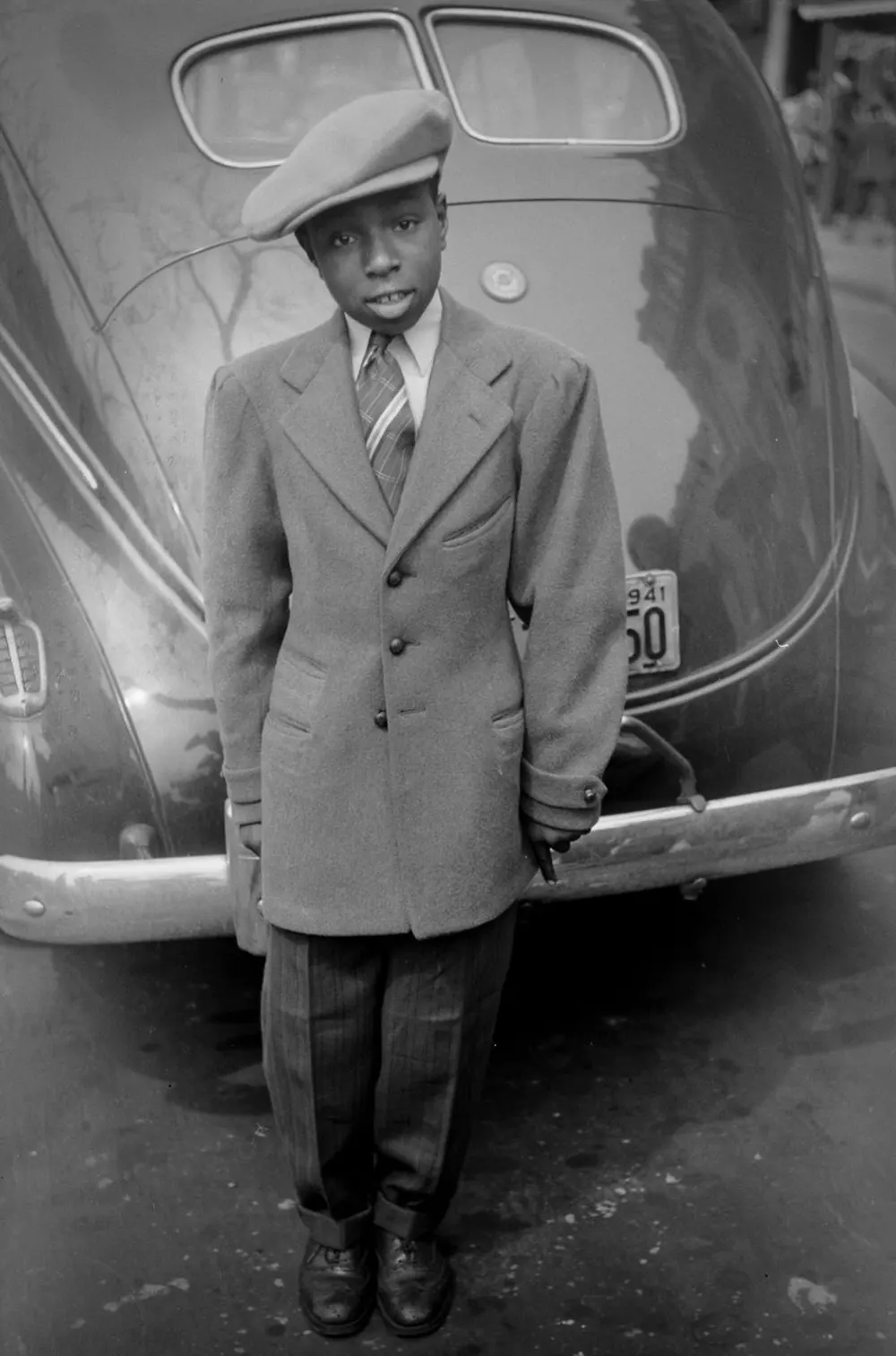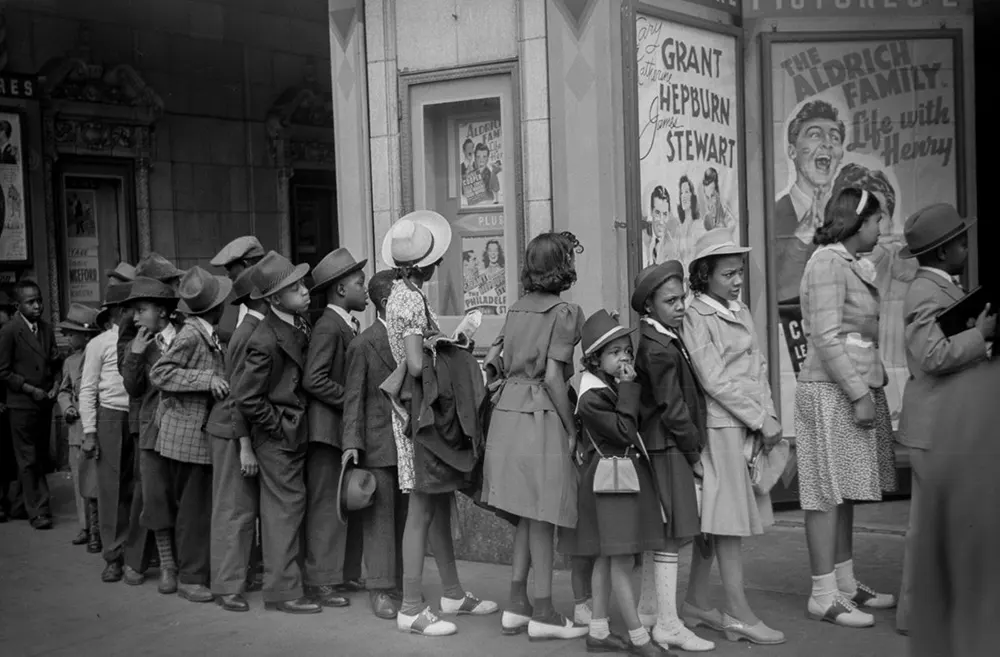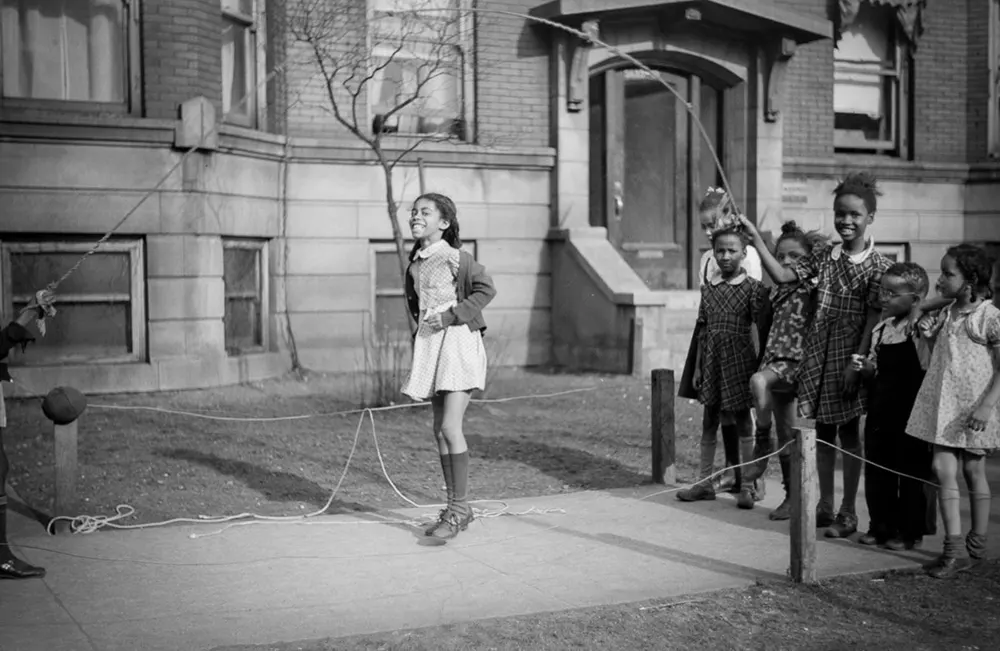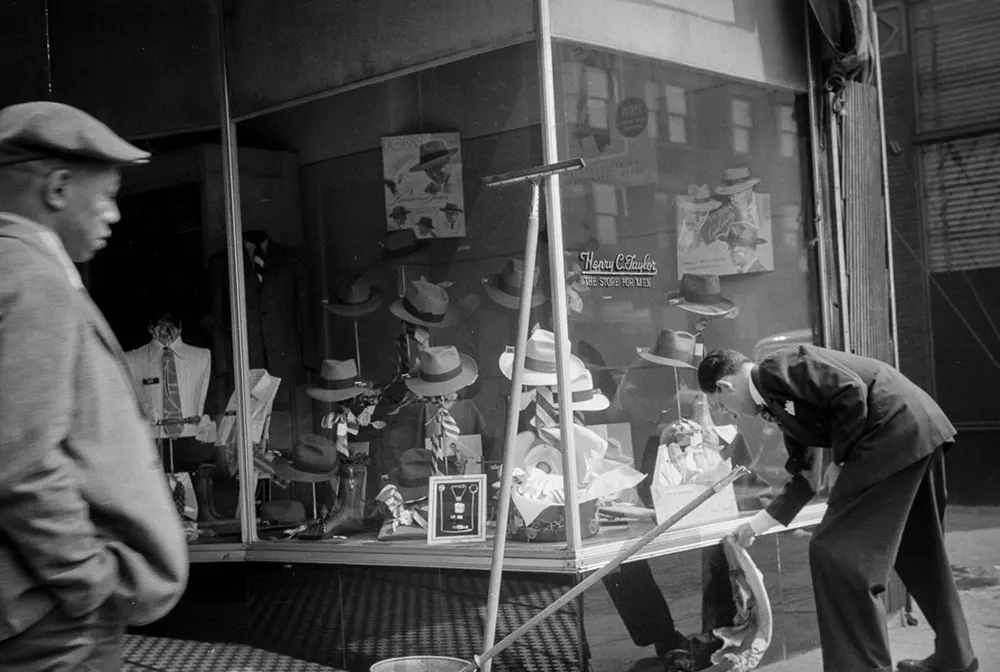African Americans of all classes built a community on the South Side of Chicago for decades before the Civil Rights Movement, as well as on the West Side of Chicago. In the spring of 1941, Farm Security Administration photographer Edwin Rosskam visited the Black Belt, wandering the streets and photographing generations of black Chicagoans. Residing in segregated communities, almost regardless of income, the Black residents of Chicago aimed to create communities where they could survive, sustain themselves, and have the ability to determine for themselves their own course in the History of Chicago. From the 1920s through the 1950s, Chicago’s South Side was the center for African-American culture and business. Known as “Bronzeville,” the neighborhood was surprisingly small, but at its peak, more than 300,000 lived in the narrow, seven-mile strip. Chicago’s black population stretched along 22nd to 63rd streets between State Street and Cottage Grove. But the pulsing energy of Bronzeville was located at the crowded corners of 35th and State Street and 47th Street and South Parkway Boulevard (later renamed Martin Luther King, Jr. Drive). At those intersections, people came to see and be seen, shop, conduct business, dine and dance, and experience this bustling black metropolis. The crowds reflected the diverse mix of people living in the black belt: young and old, poor and prosperous, professionals and laborers. Bronzeville was well known for its nightclubs and dance halls. The jazz, blues, and gospel music that developed with the migration of Southern musicians attracted scores of diverse listeners and admirers. Chicago’s black population developed a class structure, composed of a large number of domestic workers and other manual laborers, along with a small, but growing, contingent of middle-and-upper-class business and professional elites. In 1929, black Chicagoans gained access to city jobs and expanded their professional class. Fighting job discrimination was a constant battle for African Americans in Chicago, as foremen in various companies restricted the advancement of black workers, which often kept them from earning higher wages. In the mid-20th century, blacks began slowly moving up to better positions in the workforce.
(Photo credit: Edwin Rosskam / Library of Congress / Wttw). Notify me of new posts by email.
Δ Subscribe
